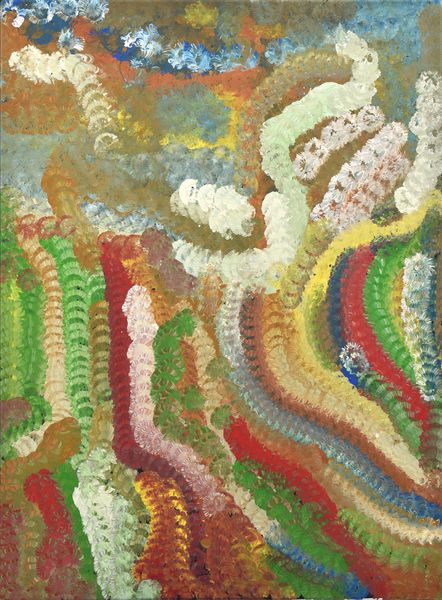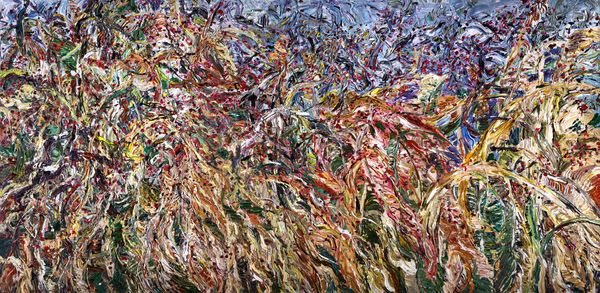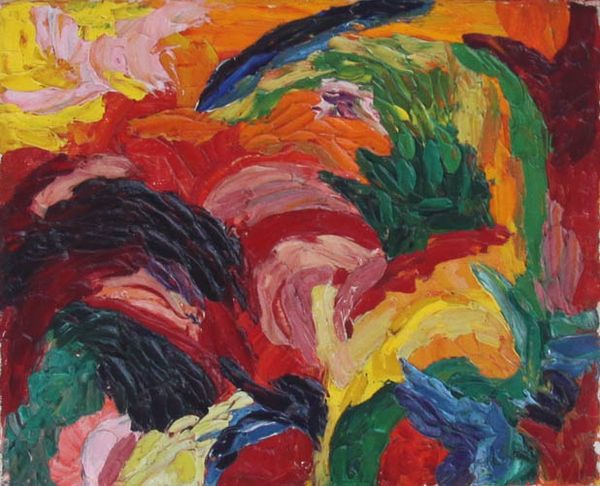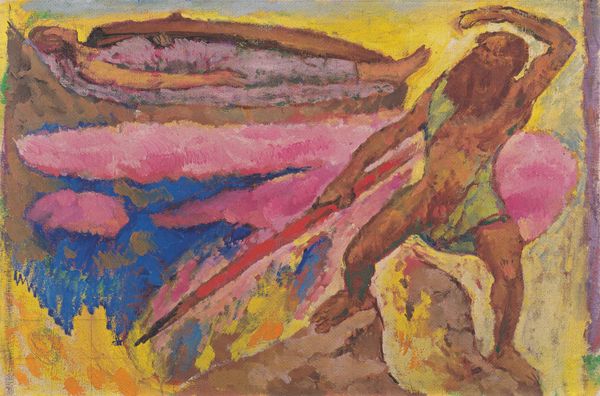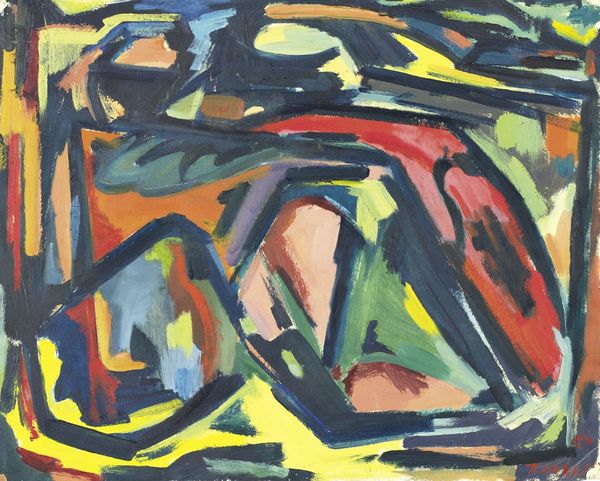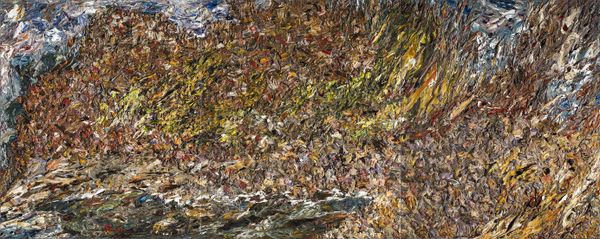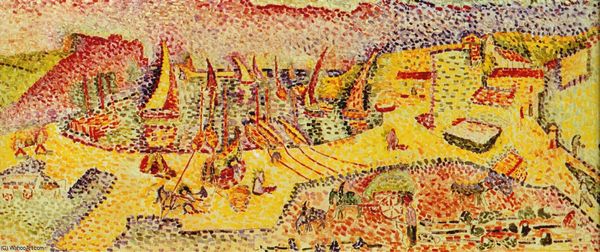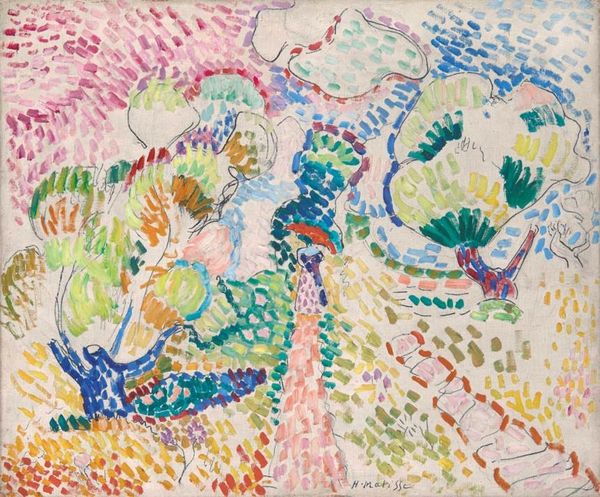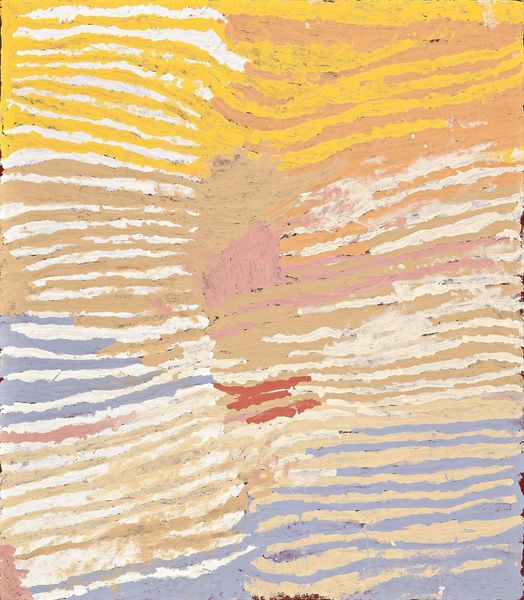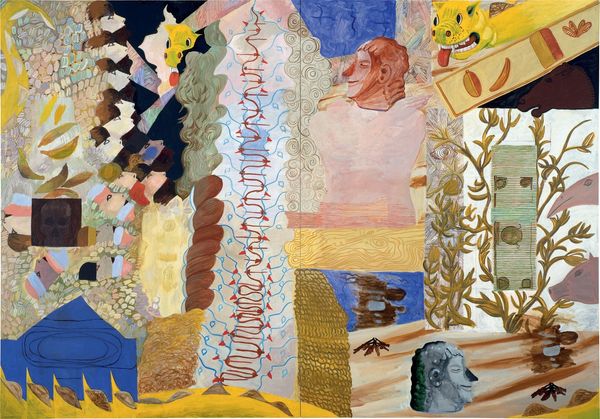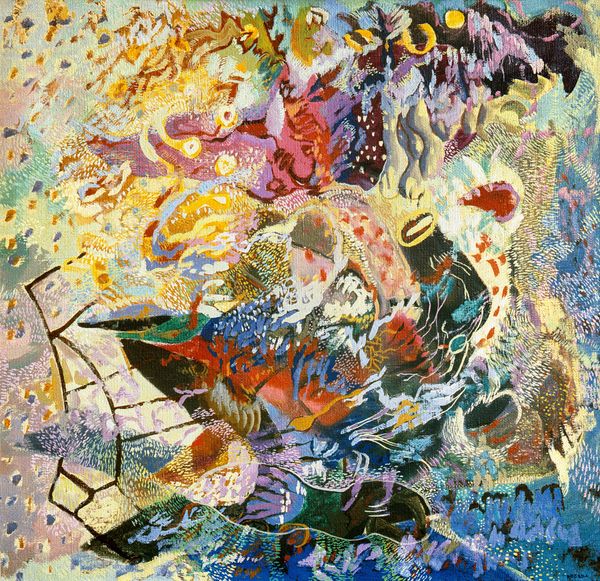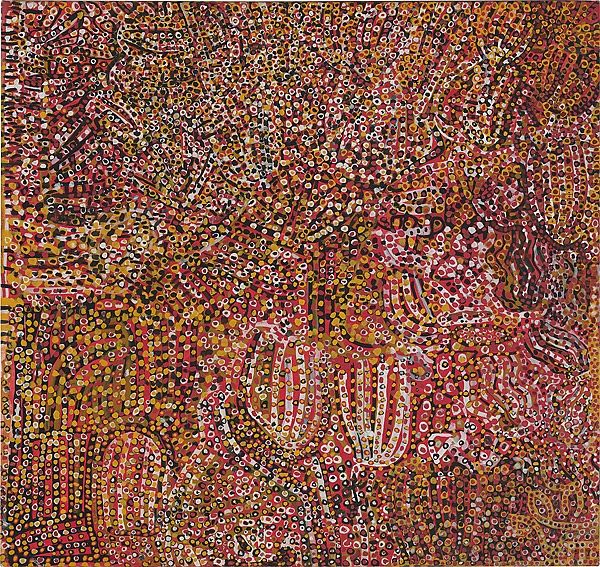
painting, acrylic-paint
#
contemporary
#
abstract painting
#
painting
#
acrylic-paint
#
acrylic on canvas
#
abstraction
Copyright: Emily Kame Kngwarreye,Fair Use
Editor: Here we have Emily Kame Kngwarreye’s “Merne (Everything)” from 1996, crafted with acrylic on canvas. It feels incredibly vibrant and alive to me. I am really drawn to the textural qualities, but I’m wondering, what else can you tell me about this piece? Curator: I’m fascinated by Kngwarreye’s process. Notice how the acrylic paint isn't blended; it’s applied in distinct dots and strokes. Consider the labor involved, the repetitive motion that builds this intricate surface. What impact do you think that has? Editor: I hadn’t thought about the repetition. I guess that kind of physical engagement with the materials adds a meditative quality to the viewing experience. It’s like a tangible record of the artist's time and energy. Curator: Exactly. And “Merne (Everything)” suggests a connection to the land, but it also points towards a consumer culture devouring and commodifying Indigenous art. Think about the canvas itself, the industrial production of acrylic paints, and how these are introduced into a traditional artistic practice. Where does that friction lead? Editor: So, it’s not just about the beautiful image, but about the whole complex network of materials, labor, and economic forces that made it possible? Curator: Precisely. Kngwarreye isn’t simply depicting landscape. She’s engaging with systems of power through materiality, isn’t she? Editor: That's a perspective I hadn’t considered. Seeing the artwork as an outcome of labor, materials, and a critical commentary makes it much more meaningful. Thank you. Curator: Indeed, this close attention to material realities reshapes our understanding and appreciation of art history.
Comments
No comments
Be the first to comment and join the conversation on the ultimate creative platform.
